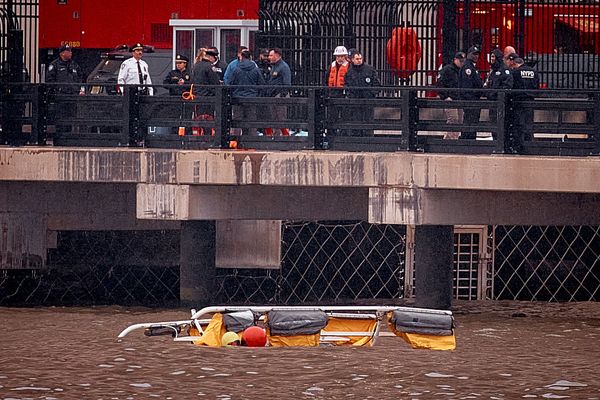About 110 million years ago, a formidable armoured fish called the Richmondichthys sweeti roamed Australia's inland Eromanga Sea.
In 2014, palaeontologists digging in the renowned fossil hotspot of Richmond, north-west Queensland, discovered the largest, most intact Richmondichthys fossil found in the country to date.
They called it Jeppy.
Jeppy was moved away to south-east Queensland for analysis by palaeontologist and natural history artist, Paul Stumkat, which has taken several years.
"Previously, there have only ever been skulls found so this is just an absolutely fantastic fossil, it is 100 per cent complete and about two metres long … an amazing specimen," Mr Stumkat said.
The prized fish fossil has a huge journey ahead of it as experts look to reunite Jeppy with its Richmond roots and put it on display to the world at the popular Kronosaurus Korner museum.
"We need to get the fossil repatriated back to Richmond which involves specialised packaging and transport and then a delicate process of putting it on display," Mr Stumkat said.
He said he hoped to raise at least $10,000 to bring Jeppy home and invest in further research.
"We're also on a mission to scientifically describe the fossil — how many scales it has, how many vertebrae, how many fins it has, things like that," Mr Stumkat said.
"It's a really important part of the discovery."
Scales like a crocodile
Discovered in the Allaru geological formation, where the Eromanga Sea once spread across inland Australia, Jeppy had huge lateral scales, similar to that of a crocodile or a turtle, running down the length of its body.
The Richmondichthys was also a filter feeder, meaning it ate suspended matter and food particles from the water, similar to how a baleen whale eats.
"That's another explanation for why it was so armoured," Mr Stumkat said.
"It had to avoid predators while it was moving slowly through the Eromanga Sea filter feeding.
"It was like an armoured little swimming tank."
Mr Stumkat hoped his team could raise the funds to rehome Jeppy and put it on display for the world to enjoy.
"There are so many interesting aspects that we've discovered about this specimen," he said.







